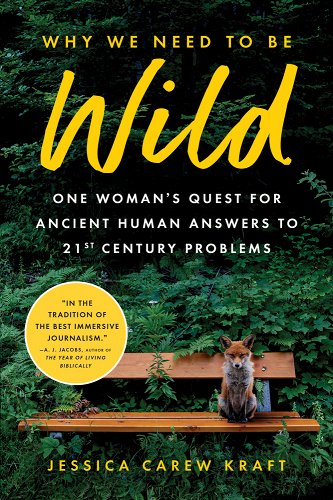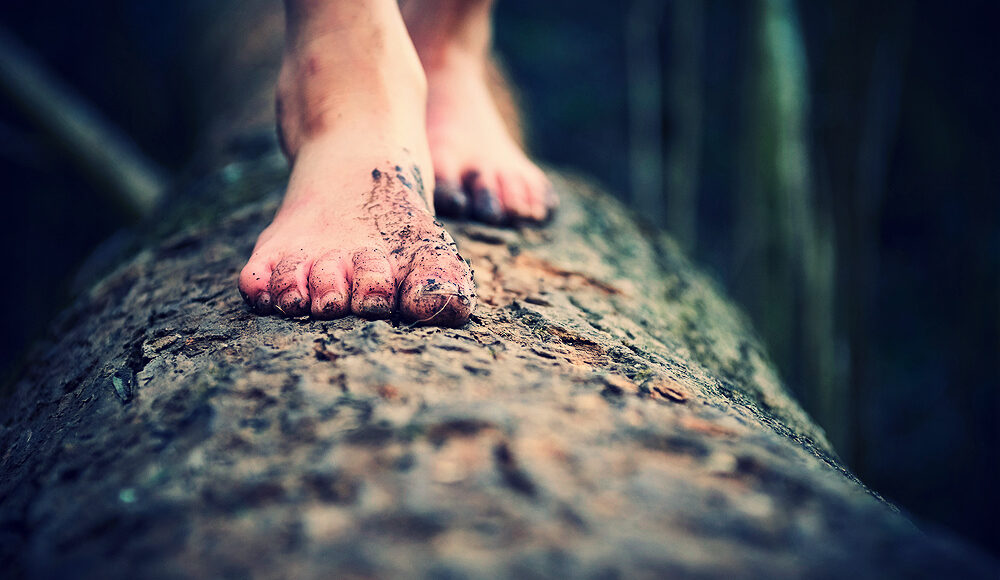Why Kids Should Learn the Original STEM: Ancient Survival Skills
In a world filled with advanced technologies and conveniences, why would anyone want to learn the ancient skills of our ancestors, especially when a digital utopia seems imminent? Yet our bodies and brains are still fundamentally the same as those of early humans who lived as hunter-gatherers for hundreds of thousands of years.
 These intelligent and spiritually attuned foragers roamed vast territories in small, supportive groups, relying on wild food rather than on permanent structures, agriculture, or livestock. Contrary to popular stereotypes, these cultures, which have persisted to this day, hold a deep respect for women and live in harmony with nature’s rhythms. Numerous groups worldwide still maintain this primal lifestyle, hunting animals and gathering plants and fungi, showing that they are far from the caricatured Flintstones.
These intelligent and spiritually attuned foragers roamed vast territories in small, supportive groups, relying on wild food rather than on permanent structures, agriculture, or livestock. Contrary to popular stereotypes, these cultures, which have persisted to this day, hold a deep respect for women and live in harmony with nature’s rhythms. Numerous groups worldwide still maintain this primal lifestyle, hunting animals and gathering plants and fungi, showing that they are far from the caricatured Flintstones.
While the idea of sourcing all our meals from nature and creating our own tools may seem unrealistic and absurd for most people, I have spent the last five years with people doing just that. I realized that learning these skills is crucial to healthy human development and beneficial for our children and families.
Until a few years ago, I was like any other resident of San Francisco during the technology boom, relying on food delivery apps and summoning GPS-guided rides around the city, constantly attached to my cell phone. I would have considered skills such as foraging, tanning hides, and crafting stone tools irrelevant to my life as a working mother of two young girls. At that time, my daily routines were hectic and stressful, but I listened to the tech CEOs and got excited about a future where the monotonous and bothersome tasks of traditional family life could be eradicated with the push of a button. Although I was concerned about the impending challenges of climate change and strongly opposed ongoing environmental destruction, I envisioned a future where I would never have to cook or drive, allowing my children and me to explore the possibilities of a healthy, digitized, and clean-energy-driven existence.
Fortunately, a few transformative experiences diverted me from that path and led me and my kids toward a more primal lifestyle.

As a journalist, I was assigned to cover a local wilderness skills school, Trackers Bay, in Oakland, CA. For several afternoons, I watched instructors give kids the freedom to work with knives, build fires, throw axes, and construct forts. I heard from the kids that they were developing great connections with each other and with the ecosystem around them. They loved the freedom they didn’t usually experience in their urban, screen-centered family routines.
Diving into research to back up what I observed, I discovered that during the formative years of childhood, typically between the ages of eight and twelve, children are spending an average of six hours per day engaged with digital media. This focus leads to a spectrum of detrimental effects: obesity, anxiety, self-esteem issues, cognitive decline, and behavioral problems. Additionally, kids’ outdoor playtime has decreased significantly, resulting in a substantial decline in their connection with nature compared to previous generations. Psychologist and addiction expert Gabor Maté posits that all addictions, including excessive social media use and video game playing, stem from childhood trauma or emotional loss. It’s possible that our society’s prevalent emotional void —due to a lack of nature connection— may be driving our addiction to screens. Maté’s postulation implies that overcoming addiction requires the substitution of equally captivating alternatives.
Nature educators emphasize that face-to-face free play in nature is the ultimate solution and antidote to excessive screen time. Research has shown that just two hours per week of immersive nature time significantly improves well-being by enhancing concentration, mood, self-esteem, cooperation, memory, and immune system functioning.
Our current educational system does not require nature immersion, and children are not taught any basic life skills and receive no training in survival skills. Instead, these are considered hobbies or privileged luxuries, yet they are fundamental to how our brains develop and ultimately thrive. As Homo sapiens, we are hard-wired to find food in our natural environment cooperatively.

Beyond specific “skills,” it is also important that children learn how to navigate the natural world. I am always amazed at the lack of physical facility that many contemporary kids demonstrate in the outdoors– sometimes even walking across a log is scary for them, let alone climbing a tree or leaving a trail for the ungroomed woods.
The “nature deficit” that environmental journalist Richard Louv identified in modern children doesn’t just have cognitive effects. These kids are not as strong, agile, or capable with their hands as previous generations. They have significantly lower vitamin D levels from spending 95% of their time indoors, and they are much more likely to be able to identify corporate logos than the creatures inhabiting green spaces by their homes.
Yet there are positive forces counteracting these disturbing losses. In the past decade, there has been an exponential increase in nature-based education programs for children, including “forest schools,” which follow a longstanding Scandinavian tradition where learning primarily occurs outdoors. Even if parents themselves lack nature knowledge, many children are gaining these skills, such as identifying plants, archery, fire-making, and knife sharpening, as I saw at Trackers Bay, which positively impacts their lives long-term.
Moreover, through these nature schools, camps, and after-school/weekend programs, we have the opportunity to recreate village-like conditions from earlier times when children freely explored woods, crossed creeks, climbed trees, and caught frogs. These experiences foster their integration into a healthy community life, without the need for expensive and separate institutions, meals, and structured programming. The essence of “it takes a village to raise a child” lies not only in constant supervision but also in ensuring there are enough children to interact with. There are still places where kids are roaming freely with a diverse group of peers and learning from adults engaged in meaningful community activities, supported by tradition, stories, and elders.
Some say this vision mainly caters to the educated elite, and what we truly need is the integration of two hours of daily free-play nature time among children of different ages in every public school system. While reforming institutions is important, it’s equally valid to empower small, local groups and individual families to create regular nature opportunities for children.
If more parents were aware that the prevalent norms of all-day structured activities, restrictive play, rule-following, and strict age-group segregation are doing more harm than good, perhaps we would witness meaningful change.
While many new parents in our culture are exposed to the powerfully nurturing techniques of attachment parenting while their children are babies and toddlers, an analogous set of routines for older kids hasn’t caught on. Yet I believe that it is the acquisition of these basic human skills and a rewilding of childhood that will continue the nurturing, deeply human legacy that attachment parenting initiates. When they are learning to walk, kids can be set barefoot on the earth and allowed to explore the natural environment. They can play, collect, and create with natural objects. As they mature, they can learn the exciting skills of shaping basic tools with stones, making friction fires, and finding wild edibles. If they are given physical tasks that challenge them more than swings and slides at a playground, we will see the return of strong, healthy kids connected to the natural world around them. Kids who are exposed to the most ancient form of STEM education can sidestep the ill effects of the digital generation.


